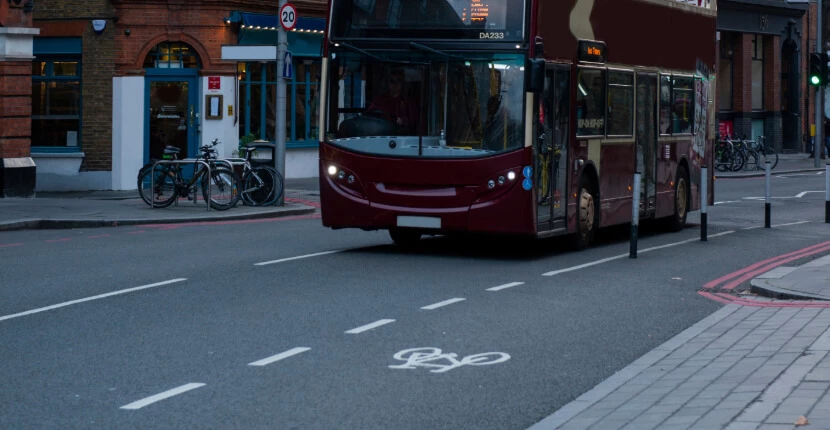
Bus Lane Surfacing
Get In TouchAt Anti Skid Surfaces, we specialise in providing long-lasting, high-performance bus lane surface solutions that satisfy the needs of heavy traffic while emphasising road safety and compliance.
We serve the UK, utilising cutting-edge materials and procedures to create long-lasting, skid-resistant surfaces.
Whether your project requires colourful, colour-coded lanes or high-durability surfaces for high-traffic routes, our personalised solutions are intended to improve efficiency and safety for all road users.
Why is Proper Bus Lane Surfacing Necessary?
Proper bus lane surfacing is essential for safety, durability, and efficient public transport operations.
Specialised anti-skid surfacing materials improve traction, withstand heavy traffic loads, and enhance visibility, ensuring a smooth and safe experience for buses, cyclists, and pedestrians.
Bus lane surfaces assure compliance with transportation laws by clearly defining bus lanes and increasing visibility.
By reducing sliding risks and guaranteeing smooth traffic flow, excellent bus lane surfacing helps to make roadways safer for all users, including drivers, cyclists, and pedestrians.
Costs of Bus Lane Surfacing
The average cost of bus lane surfacing is £20 to £80 per square metre.
The price of bus lane surfacing varies depending on factors such as materials, surface area, preparation requirements, and traffic volume.
For an exact cost, a site survey is recommended. Contact us for a free consultation to discuss your specific bus lane surfacing needs.
What are the Benefits of Anti-Skid Bus Lane Surfaces?
Anti-skid bus lane surfaces provide enhanced safety, durability, and efficiency for public transport networks. By improving traction and visibility, they reduce accident risks and ensure smooth, long-lasting road performance.
Improved Safety & Reduced Skidding: High-friction surfaces enhance tyre grip, reducing skidding risks, especially in wet or icy conditions. This ensures safer braking and manoeuvring for buses.
Durability Under Heavy Traffic: Bus lanes experience continuous wear from heavy vehicles. Anti-skid road coatings and high-friction aggregates (e.g., calcined bauxite) extend surface lifespan by preventing rutting and premature deterioration.
Enhanced Traffic Flow & Public Transport Efficiency: A well-maintained, skid-resistant surface allows buses to operate smoothly, reducing delays and minimising maintenance issues caused by surface wear.
Clear Visibility & Lane Demarcation: Anti-skid surfaces, often coloured (e.g., red bus lanes), help keep unauthorised vehicles out, ensuring designated lanes are used correctly and improving traffic management.
Resistance to Weather & Oil Spills: Specialised anti-skid surfacing withstands rain, ice, fuel spills, and frequent tyre friction, maintaining performance in all conditions with minimal maintenance requirements.
Compliance with Safety Standards: Proper anti-skid surfacing ensures adherence to UK road safety regulations, reducing accident liability and improving urban road infrastructure.
Upgrading bus lanes with high-friction, skid-resistant coatings enhances safety, prolongs road lifespan, and optimises public transport operations, making it a cost-effective, long-term investment.
What are the Regulations that Govern Bus Lane Surfacing?
Bus lane surfacing must adhere to rules such as EN 13108, which stipulate material performance and quality, with extra guidelines focusing on colour consistency and skid resistance.
Adherence to these criteria guarantees that the bus lane surface meets safety requirements and provides long-term, dependable performance for public transportation networks.
